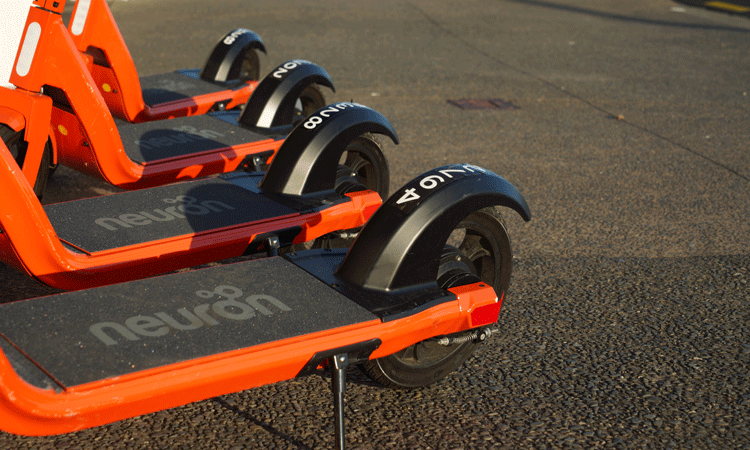 Neuron Mobility launches global trial of innovative ‘e-scooter brain’Neuron Mobility has launched trials in the UK, Australia and Canada of its new ‘e-scooter brain’, which features three new cutting-edge, Neuron-developed technologies that support e-scooter and passenger safety.
Neuron Mobility launches global trial of innovative ‘e-scooter brain’Neuron Mobility has launched trials in the UK, Australia and Canada of its new ‘e-scooter brain’, which features three new cutting-edge, Neuron-developed technologies that support e-scooter and passenger safety.Safety-leading e-scooter operator, Neuron Mobility, has announced the launch of a six-month global trial across four cities in three countries (the UK, Australia and Canada) to put its revolutionary new ‘e-scooter brain’ to the test.
Fitted to the company’s N3 e-scooters, the new ‘e-scooter brain’ is the label for three new cutting-edge technologies developed by Neuron that, when combined, make its e-scooter the most sophisticated ever produced. The technology will give the company, and the cities managing shared e-scooter programmes, unprecedented control of how the vehicles are ridden and parked.
The range of new technologies that make up the e-scooter brain includes High Accuracy Location Technology (HALT), Rapid Geofence Detection (RGD), an array of multi-function sensors and a new proprietary vehicle operating system. Used together, these features facilitate the world’s first Dangerous Riding Detection (DRD) system for e-scooters, which allows the company to correct or warn of unsafe behaviours in real time, while also profiling users and incentivising safe riding.
High Accuracy Location Technology (HALT) and Rapid Geofence Detection (RGD)
HALT is the next step in e-scooter precision location tracking. Using a sophisticated fixed base station within a city, which connects wirelessly to a receiver in the e-scooter, it corrects GPS inaccuracies, allowing every vehicle’s location to be tracked in real-time down to a range of within 10cm. This is at least 50 times more accurate than the e-scooter industry’s average GPS location system, which plots a vehicle’s location to between five and 10m or more within cities.
Neuron’s Rapid Geofence Detection (RGD) feature works with HALT to give unparalleled control of how e-scooters are managed in cities. With RGD, when an e-scooter crosses a geofence, such as a no-ride or go-slow zone, the vehicle can respond in 0.3 seconds, rather than the six to 12 seconds that it currently takes most rental e-scooter models to react. This is achieved by storing geofence data, and rules of how an e-scooter should behave when it crosses a geofence in the e-scooter’s brain on the e-scooter rather than in the cloud, which significantly cuts down on processing time.
Combining the high precision location capabilities of HALT with the ability to react almost immediately to geofences using RGD provides Neuron with the ‘holy grail’ that many e-scooters operators, and city transport managers, have been searching for. Using these two technologies, Neuron will now be able to detect and control pavement riding, provide high accuracy geofencing and also designate precise smart parking locations.
https://www.civilengineering.ai/neuron-mobility-launches-global-trial-of-innovative-e-scooter-brain/

Post a Comment